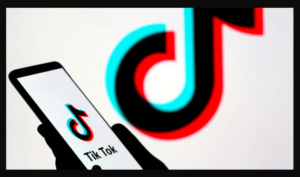
The debate whether email still serves its purpose in 2019 is ongoing. Statistics fly all over the place, with the opposition claiming social media have taken over, and supporters defending the service on grounds of marketing.
There’s no denying that emails of today come with many a disadvantage, spam messages being just one. Still, research has shown that email campaigns remain by far most effective, displaying a stunning 90 percent of visibility, as compared to, say, 2 percent on Facebook’s newsfeed. And that’s just the beginning.
According to reputable researchers’ data, the rise of mobile phones has given a whole new purpose to emails, in more ways than one. Let’s dive into figures a bit more to get the facts straight.
Trivia: The term “spam” originates from a Monty Python sketch. Its modern usage predates email, having taken root in MUDs (multiplayer real-time virtual world of the 80’s).
You’ve Got Mail!
Email marketing remains the cheapest advertisement method. Coupled with the ease of use and its effectiveness, it doesn’t come as a surprise that the great majority of businesses, large and small, use emails to reach new and keep the existing customers.
More importantly, email marketing is also convenient for customers, due to three reasons:
1. Reading emails is free.
2. Emails are accessible across devices.
3. Emails are lengthier and more in-depth than SMS offers.
As mentioned above, mobile devices play a significant role in the process. With 53 percent of emails being accessed through cellular phones and tablets and 75 percent of Gmail users checking the inbox on mobile devices, email advertisements are omnipresent.
As for some actual statistics, it shows that 70 percent of mobile readers re-read their emails and are 65 percent more likely to click through than readers accessing email on their computers. In fact, one in three readers will click on the offer.
To top it off, most subscriptions are performed via mobile devices, with the usage of the latter projected to keep growing at a 20 percent annual rate.
Trivia: Only 9 percent of email subject lines contain emojis.
Email Automation
Emails have one tremendous advantage: they can be seamlessly automated. In addition to saving time, the feat allows for more time being spent on other marketing aspects, such as is, e.g., targeting. Merely this fact explains why 95 percent of companies making use of marketing automation opt to focus on email marketing. In fact, 82 percent of B2B and B2C companies use this strategy. Statistics shows that businesses using automated email campaigns stand a 133 percent higher chance of sending relevant messages.
As for the efficiency of email campaigns, the figures show that:
Revenue for B2B marketing automation systems increase 60 percent per year.
Transactional emails generate six times more revenue and have eight times more clicks than other email types.
B2C marketers using automated email campaigns have 50 percent conversion rates.
Over 75 percent of email revenue is generated by targeted email campaigns.
On average, automated emails are opened in 70.5 percent cases and generate 152 percent higher click-through rates.
And some figures for the U.S. market:
44.9 percent of U.S. retailers use personalized product recommendations.
31.5 percent of U.S. retailers use a personalized welcome message.
27.6 percent of customers add shopping cart reminders.
Trivia: The biggest webmail service in the U.S. is Yahoo! Mail, followed by Hotmail and Gmail.

Email ROI
How lucrative are email marketing campaigns? It turns out, quite a bit! Email marketing has a stunning ROI of 3800 percent globally, with the average order value per email being three times higher than that of social media. As compared to direct email’s ROI (7 percent), email’s ROI stands at 28.5 percent.
Due to these benefits, marketers pay close attention to the developments. Here are some more statistics to illustrate:
– 60 percent of marketers use conversion rates to evaluate the effectiveness of emails.
– 18 percent businesses reported a thrice higher ROI in 2014 than in 2013.
– Email campaigns generate $44 per a $1 investment.
– 29 percent of marketers use ROI metrics to keep track of email effectiveness.
– 77 percent of ROI is generated by targeted and segmented campaigns.
Trivia: 60 percent of all emails account to spam.
Email History: Now and Then
Keeping all these incredible figures in mind, it is almost impossible to imagine that email originally served for fast communication. Almost.
In truth, emails were so much more than that, even in the beginning. E.g., before big market players invented online storages, email served for transferring digital documents. Email attachments may have gone a long way from the time of their inception, but they are still being used, and profusely, at that.
With the technologies of today, many tend to forget that email was the original newsfeed. Newsletters were once irreplaceable. Today, the email technology is crucial when it comes to pressing matters: think in terms of paper-free bills and bulletins.
Trivia: “123456” is the most popular password choice worldwide (don’t try this at home!).
Discover more from TheLatestTechNews
Subscribe to get the latest posts to your email.













